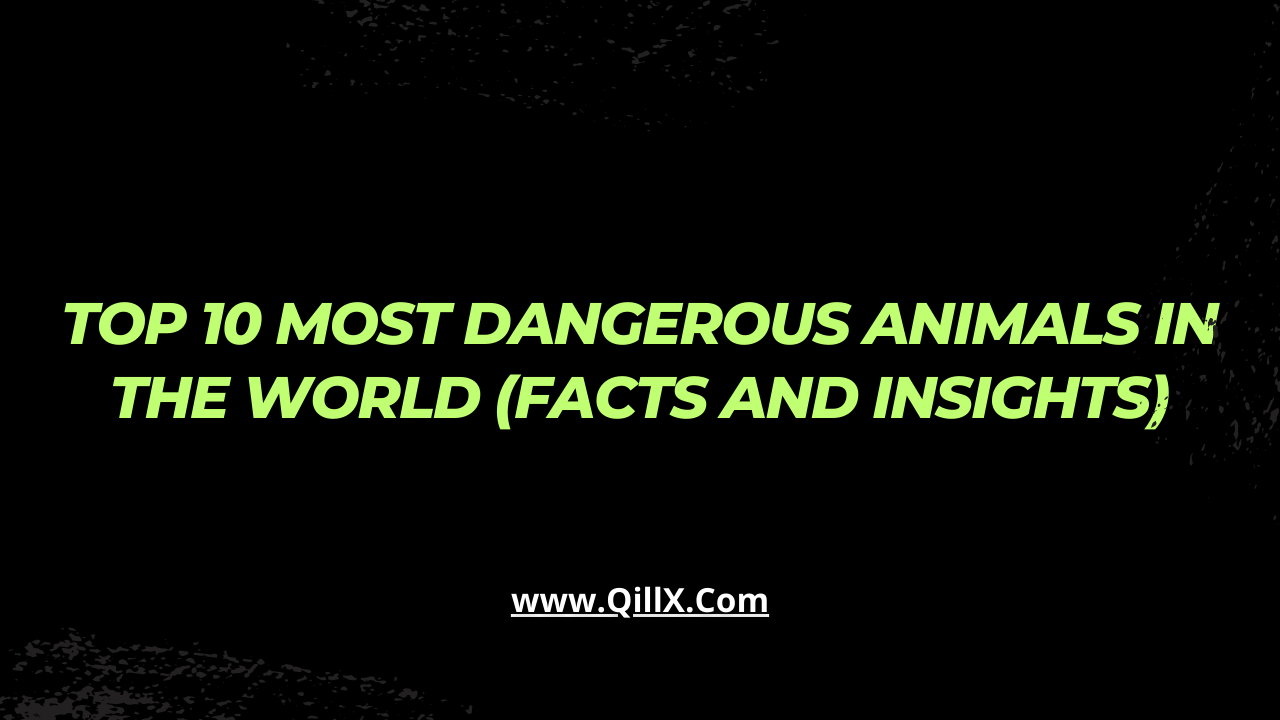Hello Everyone, In the intricate tapestry of the natural world, there exist creatures that command awe and respect due to their lethal capabilities and the primal instincts they evoke. From the depths of the oceans to the heart of dense forests, the animal kingdom boasts a selection of formidable beings that have earned their place as the world’s most dangerous inhabitants. These creatures, possessing a unique blend of power, stealth, and adaptations honed over millennia, remind us of the raw intensity of survival in the wild.
In this exploration, we delve into the top 10 most dangerous animals, uncovering the intricate web of evolution that has endowed them with the ability to thrive in their respective ecosystems. Through an understanding of their behaviors and attributes, we gain insight into the delicate balance that maintains the harmony of our planet’s diverse and often perilous habitats.
1) Mosquito (Aedes aegypti) – Silent Vector of Deadly Diseases:
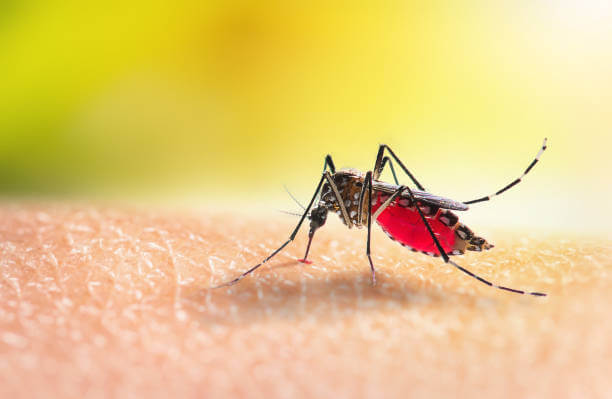
Size: Mosquitoes are small insects, typically measuring around 3 to 9 millimeters in length.
Physical Description: The Aedes aegypti mosquito possesses a distinctive appearance, characterized by its dark-colored body covered with silvery-white markings. Its legs and abdomen feature white stripes, contributing to its recognizable look. With slender, elongated legs and delicate wings, the mosquito is adept at navigating its environment with stealth that belies its lethal potential.
Best Places to Visit: Unfortunately, mosquitoes are ubiquitous and can be found in various regions worldwide. Their prevalence is particularly notable in tropical and subtropical areas where standing water, such as ponds, puddles, and stagnant containers, provides ideal breeding grounds. Visitors to destinations with these conditions are advised to take precautions, such as using insect repellents and wearing protective clothing, to reduce the risk of mosquito-borne diseases.
2) Saltwater Crocodile (Crocodylus porosus) – Apex Predator of Estuarine Ecosystems:
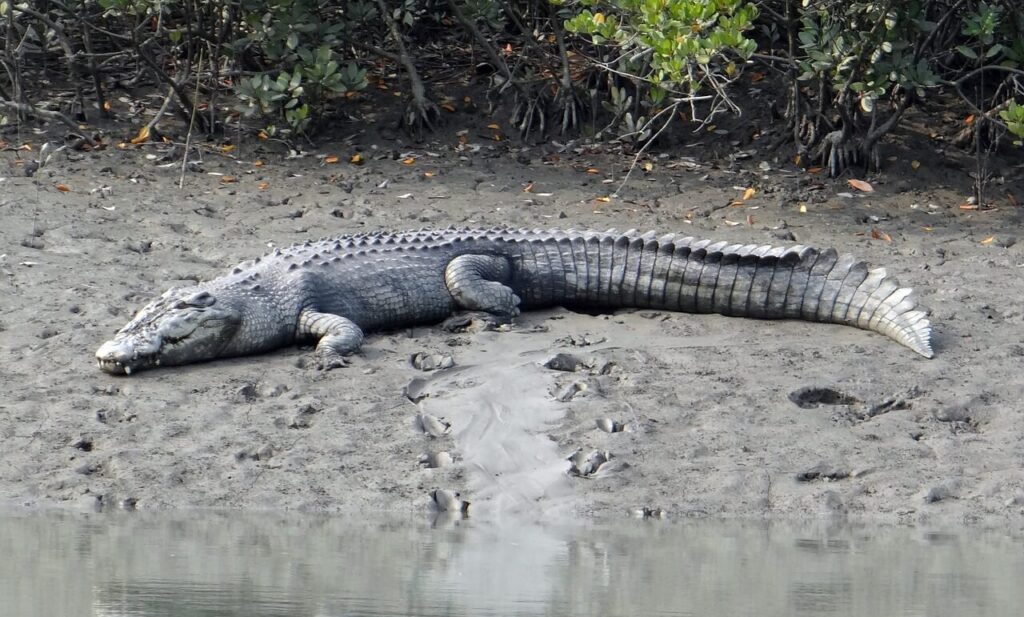
Size: The saltwater crocodile is among the largest reptiles on Earth, with males reaching lengths of 18 to 23 feet (5.5 to 7 meters) and weighing between 1,000 to 2,200 pounds (450 to 1,000 kilograms). Females are generally smaller, growing up to 10 feet (3 meters) in length.
Physical Description: The saltwater crocodile boasts a formidable appearance, featuring a powerful body covered in tough, scaly skin ranging from dark gray to brown. Its eyes and nostrils are positioned atop its head, allowing the crocodile to remain nearly submerged while observing its surroundings. The signature V-shaped snout, lined with sharp teeth, reinforces its status as an apex predator capable of consuming a wide range of prey.
Best Places to Visit: Saltwater crocodiles inhabit the brackish and saltwater environments of estuaries, coastal areas, and mangrove swamps throughout the Indo-Pacific region. Notable locations for observing these creatures include northern Australia, particularly in areas such as Kakadu National Park, where guided tours offer visitors the chance to witness these ancient reptiles in their natural habitats. However, it’s important to note that viewing saltwater crocodiles requires caution and respect for their space due to their unpredictable behavior.
3) Box Jellyfish (Chironex fleckeri) – Tranquil Menace of the Seas:
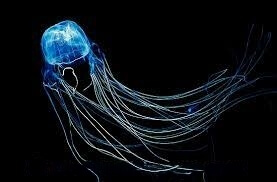
Size: The box jellyfish, despite its seemingly delicate appearance, is a formidable marine creature. Its bell-shaped body can reach sizes of up to 12 inches (30 centimeters) in diameter. Its trailing tentacles, which contain its potent venom, can extend several feet in length.
Physical Description: The box jellyfish’s transparent body is a deceptive cover for its potent venomous capabilities. Its nearly transparent bell-shaped body allows it to blend in seamlessly with the ocean’s waters, making it challenging for swimmers and divers to detect. Its tentacles, which hang below its body, are lined with specialized cells known as cnidocytes. These cells contain venom-filled capsules called nematocysts, which are armed with tiny harpoon-like structures. When triggered, these nematocysts discharge venom into their target, immobilizing or killing prey.
Best Places to Visit: Box jellyfish inhabit the warm coastal waters of the Pacific and Indian Oceans, with significant populations found near Australia, Thailand, and Indonesia. These waters provide the ideal conditions for the box jellyfish to thrive. Travelers and beachgoers in these regions should exercise caution when swimming or snorkeling, particularly during the box jellyfish’s peak season, which varies based on location and environmental conditions. Wearing protective clothing, using appropriate swimwear, and adhering to local safety guidelines can significantly reduce the risk of encountering this dangerous creature.
4) Cape Buffalo (Syncerus caffer) – The Unpredictable African Giant:
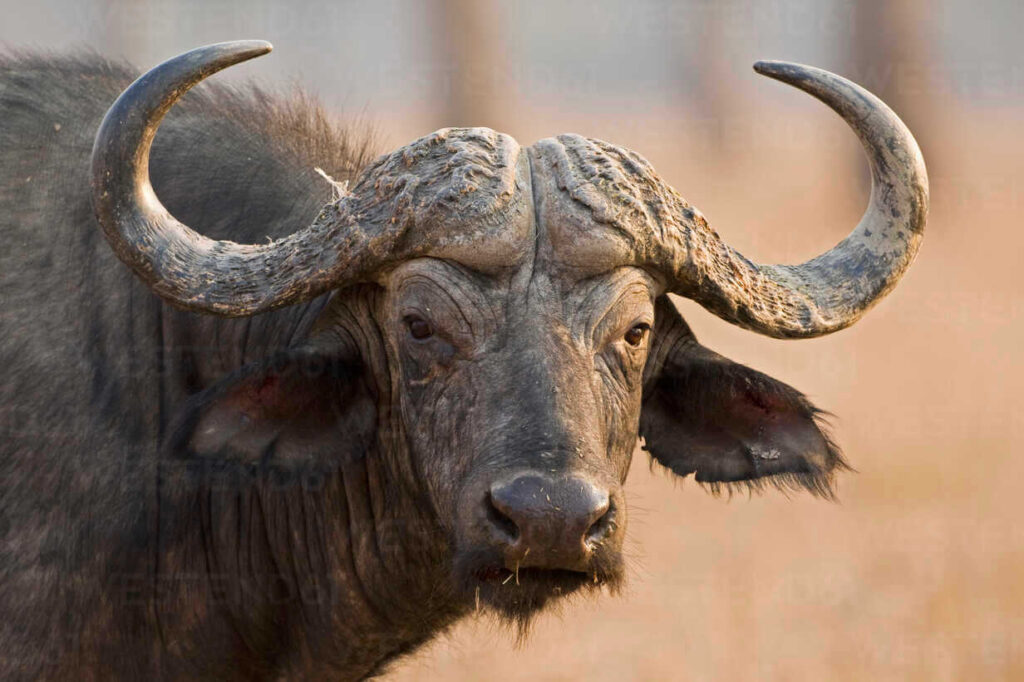
Size: The Cape buffalo, also known as the African buffalo, is one of the largest bovids on the planet. Adult males, known as bulls, can weigh between 1,100 to 2,200 pounds (500 to 1,000 kilograms) and stand about 5.6 to 6.6 feet (1.7 to 2 meters) tall at the shoulders.
Physical Description: The Cape buffalo’s robust and muscular body exudes power and resilience. Its coarse fur ranges from dark brown to black, offering protection against the elements. The buffalo’s most distinctive feature is its massive, curved horns. These horns, which fuse at the base, form a formidable shield that extends outward from its head. The buffalo’s horns are used for self-defense and can be a potent weapon against predators or perceived threats.
Best Places to Visit: Cape buffaloes are distributed across a variety of African habitats, including savannas, grasslands, and woodlands. They can be found in numerous national parks and game reserves throughout sub-Saharan Africa. Popular destinations for observing Cape buffaloes include Kruger National Park in South Africa, Serengeti National Park in Tanzania, and Chobe National Park in Botswana. These locations offer opportunities to witness the buffalo’s behavior in its natural environment, always under the guidance of experienced safari guides.
5) Poison Dart Frog (Dendrobatidae) – Colorful Lethal Elegance:
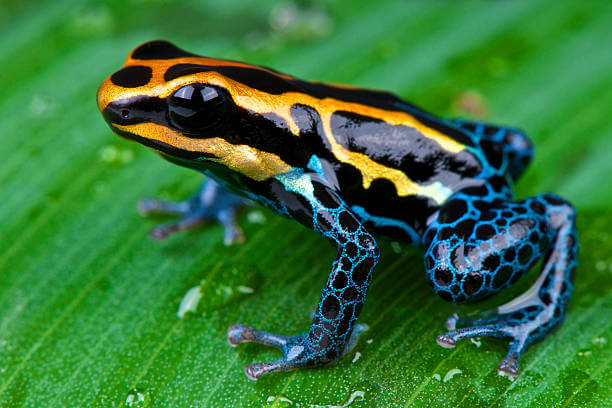
Size: Poison dart frogs are small amphibians, with most species measuring around 0.5 to 2.5 inches (1.3 to 6.3 centimeters) in length.
Physical Description: Despite their diminutive size, poison dart frogs are some of the most vibrant and striking creatures in the animal kingdom. Their vibrant colors, ranging from brilliant reds and yellows to blues and greens, serve as a warning to potential predators about their toxic nature. These frogs have smooth, glossy skin that helps in retaining moisture and provides a surface from which to display their beautiful hues.
Toxicity: The name “poison dart frog” stems from the indigenous people’s historical use of the frogs’ toxic secretions to poison the tips of blowgun darts. The toxicity comes from their diet of specific insects and plants in their natural habitats. Among the most toxic is the golden poison dart frog (Phyllobates terribilis), which holds the title for being one of the most poisonous animals on Earth.
Best Places to Visit: Poison dart frogs are primarily found in Central and South American rainforests, particularly in countries like Costa Rica, Colombia, and Brazil. While their small size makes them challenging to spot, guided nature tours and visits to tropical rainforests offer opportunities to catch a glimpse of these colorful yet dangerous amphibians in their natural habitats.
6) Inland Taipan (Oxyuranus microlepidotus) – The World’s Most Venomous Snake:
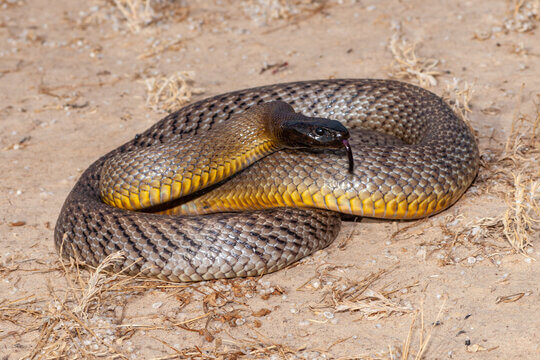
Size: The inland taipan, also known as the “fierce snake,” is a relatively small snake, averaging around 4.3 to 5.9 feet (1.3 to 1.8 meters) in length.
Physical Description: Despite its unassuming appearance, the inland taipan possesses a striking beauty with a mix of colors. Its back is usually pale to dark brown or olive, while the underside is lighter. Some individuals may display vibrant orange hues on their sides, adding to their unique appearance.
Venom: What makes the inland taipan particularly dangerous is its venom. It produces the most potent venom of any snake in the world, with a venom yield that can be fatal in minuscule amounts. This snake’s venom contains a complex mixture of neurotoxins, hemotoxins, and myotoxins that can rapidly cause severe symptoms and potentially lead to death if not treated promptly.
Best Places to Observe: The inland taipan is native to central eastern Australia, primarily inhabiting arid and semi-arid regions. It’s a very elusive species and is rarely encountered in the wild. Due to its rarity and the potentially dangerous nature of its venom, it is not a creature that people seek out to observe in its natural habitat. Instead, those interested in learning about this snake are best served by consulting reputable educational sources and herpetological institutions.
7) African Elephant (Loxodonta africana) – Gentle Giants with Tremendous Power:
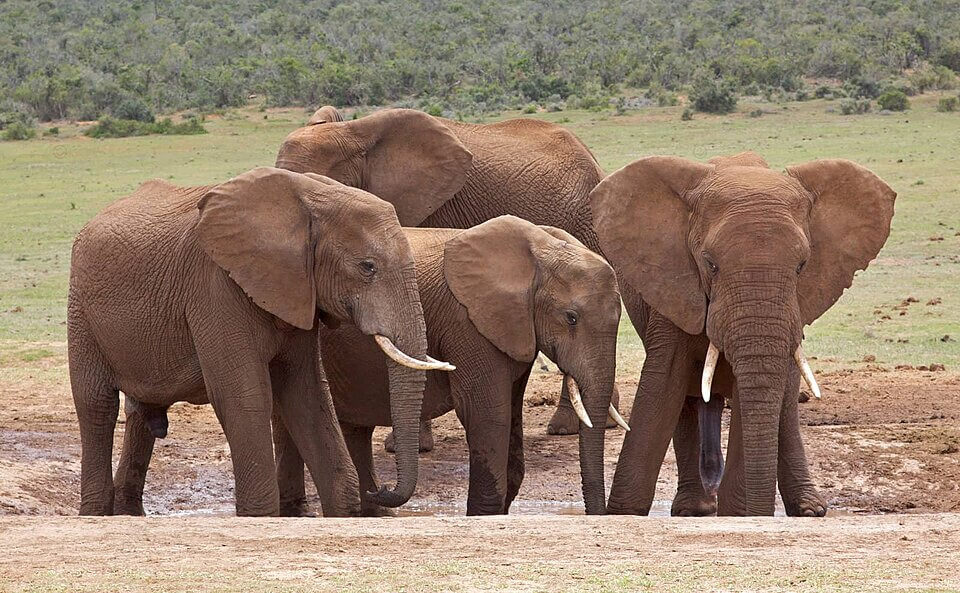
Size: The African elephant is the largest land animal on Earth. Adult males, also known as bulls, can weigh between 8,800 to 15,400 pounds (4,000 to 7,000 kilograms) and stand around 10 to 13 feet (3 to 4 meters) tall at the shoulders.
Physical Description: African elephants are majestic creatures with a unique charm in their massive size. They feature a thick, wrinkled gray skin that helps regulate their body temperature and provides protection from the harsh African sun. Their large, flapping ears serve as cooling systems, dissipating excess heat. Both males and females have elongated, curved tusks, though the tusks of males are generally larger.
Behavior and Potential Threat: African elephants are known for their social structure and are often considered gentle giants, displaying complex behaviors and strong family bonds. However, they can become extremely dangerous when provoked or if they perceive a threat. Their immense size, combined with the strength to uproot trees and overturn vehicles, underscores their potential as a hazard to human safety in certain situations.
Best Places to Observe: African elephants inhabit a variety of habitats across sub-Saharan Africa, from savannas to forests. Popular destinations for observing these magnificent creatures include national parks and reserves in countries like Kenya, Tanzania, South Africa, and Botswana. Guided safari tours provide the opportunity to witness these giants in their natural environment, always under the guidance of experienced wildlife experts who prioritize the safety of both visitors and the elephants.
8) Cone Snail (Conus spp.) – Beautiful Venomous Predators of the Sea:
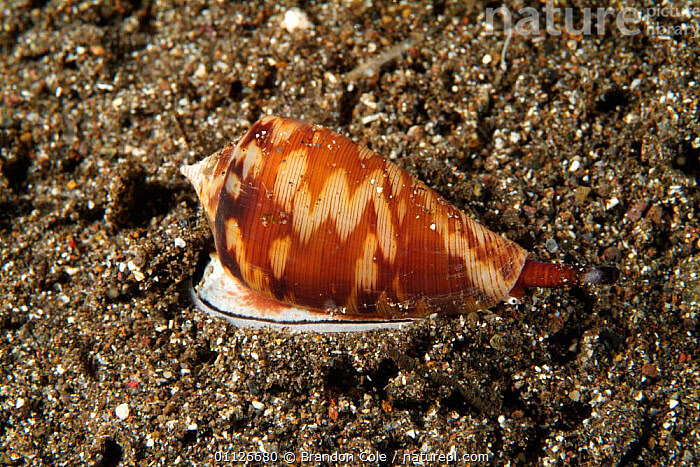
Size: Cone snails come in various sizes, with some species reaching lengths of 4 to 6 inches (10 to 15 centimeters), while others can be smaller or larger.
Physical Description: Cone snails inhabit tropical marine environments, often found in shallow waters and coral reefs. They have beautifully patterned and intricately textured shells that make them attractive to collectors and enthusiasts. The striking appearance of their shells, coupled with their vibrant colors, can easily lull observers into underestimating their deadly nature.
Venom: What makes cone snails dangerous is their potent venom, primarily used for hunting their prey. The snail’s venom is delivered via a specialized harpoon-like structure called a radula, which extends from its proboscis. This venom can paralyze and kill small fish and other prey almost instantly. Unfortunately, it’s not just dangerous to prey; some species of cone snails can deliver venomous stings to humans if handled, leading to severe pain, paralysis, and, in the most severe cases, death.
Best Places to Observe: Cone snails inhabit the warm waters of the Pacific and Indian Oceans, especially around regions such as the Philippines, Indonesia, and the Great Barrier Reef in Australia. While they may not be common sights for casual observers, snorkelers, and divers exploring coral reefs might come across these fascinating yet potentially hazardous creatures. It’s essential to exercise caution and avoid touching any marine life, including cone snails, to minimize the risk of stings.
9) Blue-Ringed Octopus (Hapalochlaena spp.) – Tiny Yet Deadly Master of Camouflage:
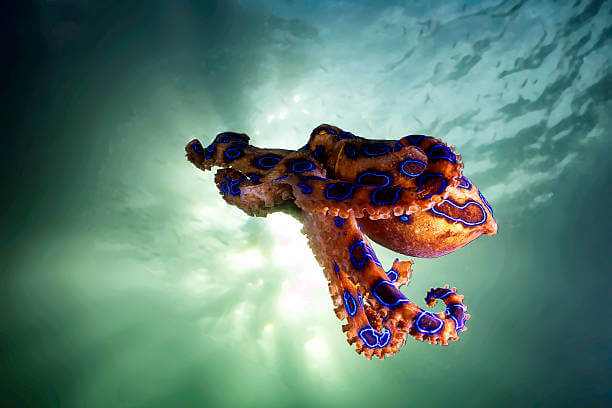
Size: Blue-ringed octopuses are relatively small creatures, with a body length that usually ranges from 5 to 8 inches (12 to 20 centimeters).
Physical Description: These octopuses are masters of disguise, blending seamlessly into their surroundings thanks to their mottled brown or yellowish skin. Their true danger becomes evident when they’re threatened or cornered. When agitated, the blue-ringed octopus reveals its striking electric-blue rings, a warning signal to potential predators or threats. These vibrant rings, caused by specialized skin cells, serve as a bold “stay away” message.
Venom: Despite their small size, blue-ringed octopuses are considered one of the most venomous marine creatures. Their venom contains a powerful neurotoxin that can cause paralysis and, in severe cases, respiratory failure. The tiny beak-like mouth of the octopus delivers the venom when it bites, often leaving victims unaware of the bite due to the octopus’s small size and subtle attack.
Best Places to Observe: Blue-ringed octopuses are found in the warm coastal waters of the Pacific and Indian Oceans, especially around regions like Australia, Indonesia, and the Philippines. Divers and snorkelers exploring coral reefs might encounter these small yet captivating creatures. However, caution is crucial, as direct contact with blue-ringed octopuses can be extremely dangerous. Adhering to safety guidelines and avoiding handling marine life is essential to reduce the risk of envenomation.
10) Cassowary (Genus: Casuarius) – Flightless Giant of the Rainforest:
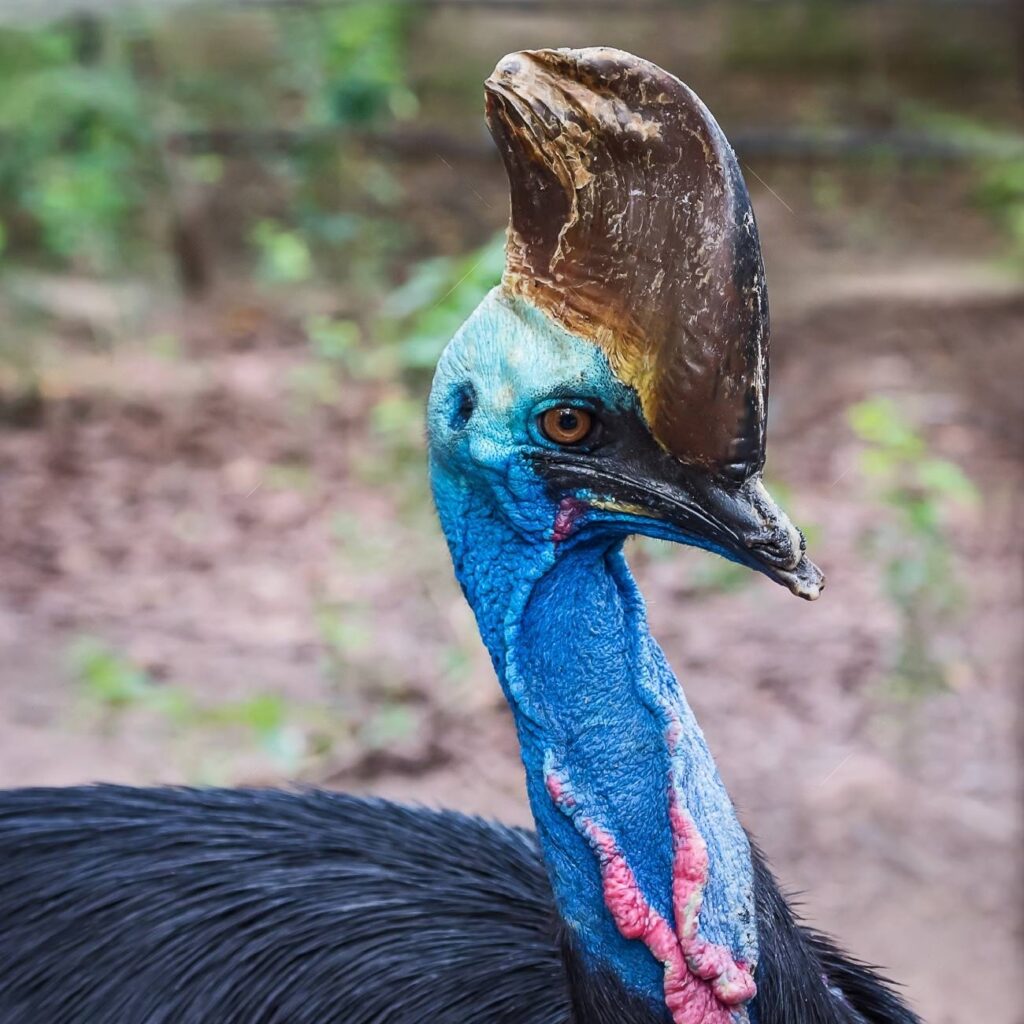
Size: The cassowary is a large, flightless bird, with adult individuals typically ranging from 5.9 to 6.6 feet (1.8 to 2 meters) in height.
Physical Description: The cassowary’s appearance is remarkable, with a tall, slender body covered in black feathers, highlighted by vivid blue skin on its neck and a helmet-like casque on its head. This casque, made of keratin, serves an unknown purpose, possibly acting as a form of protection or for sound amplification.
Potential Danger: Cassowaries are known for their strong legs and large, dagger-like claws, which can be incredibly dangerous if used in self-defense. These birds are known to be territorial and can become aggressive when provoked or feel threatened. If cornered or challenged, a cassowary may use its powerful legs to deliver forceful kicks, which can cause severe injuries.
Best Places to Observe: Cassowaries inhabit the rainforests of northern Australia, New Guinea, and nearby islands. While they can be challenging to spot in the wild due to their secretive nature, certain national parks and wildlife reserves in these regions offer opportunities for nature enthusiasts to learn about and potentially observe cassowaries from a safe distance. It’s essential to respect their space and avoid direct interactions to prevent any accidental confrontations.
Must Read:-
Conclusion
In conclusion, the top 10 most dangerous animals in the world remind us of the diverse and sometimes unpredictable nature of wildlife. Understanding their behaviors, respecting their habitats, and prioritizing safety is essential when sharing our planet with these remarkable yet potentially hazardous creatures. Responsible coexistence allows us to appreciate the beauty of our natural world while safeguarding ourselves and the animals that call it home.

